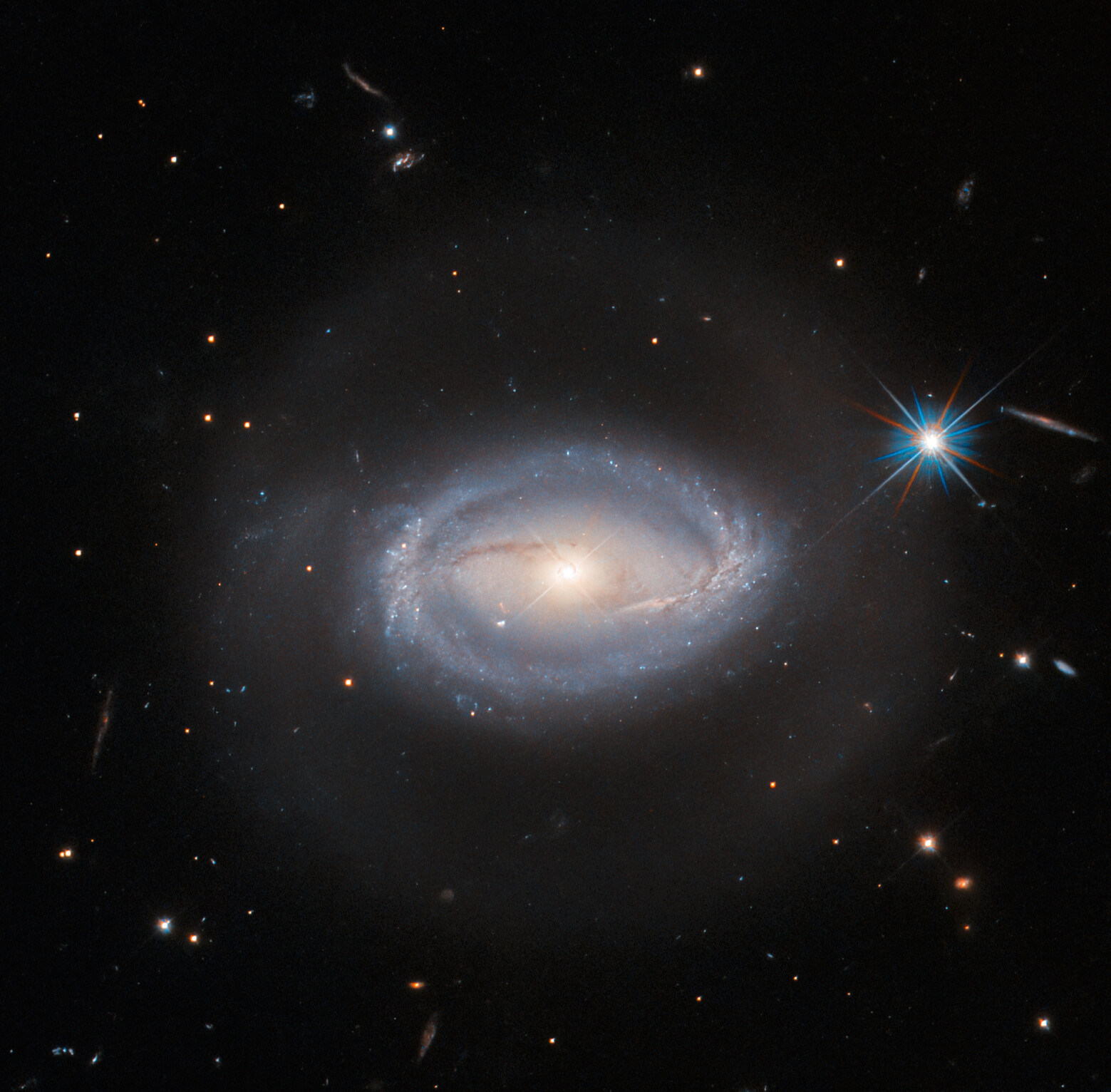Hubble spotted a bizarre space object that defies classification
Meet Z 229-15, a celestial object that depending on how you feel, could be one of three different things – all at once. Shared as the European Space Agency’s “Picture of the Week” for the week of March 27, an image of Z 229-15 showcases what makes this bizarre space object so intriguing, and why it has left many astronomers in awe since its initial discovery.
Located roughly 390 million light-years from Earth in the Lyra constellation, Z 229-15 is one of a few celestial objects that can be classified as multiple things. The ESA says that the object can be a quasar, and sometimes it can be defined as an active galactic nuclear (AGN). Other times it is defined as a Seyfert galaxy. Further, the ESA says that this bizarre space object is all of those things at once due to an overlap in the definition of those terms.
And it is indeed a galaxy. Looking at the image, you can easily make out the spiral appearance we know spiral galaxies to have. Further, it contains an AGN, which is when a region at the center of a galaxy is much brighter due to a supermassive black hole being active in the core. The black hole itself isn’t brighter. Rather, all the material trapped in this bizarre space object is to blame for the luminosity.
But what makes this celestial object a Seyfert galaxy? Well, that’s where the quasar involved in Z 229-15 comes into play. See, most quasars are so bright they drown out the light from the stars within their galaxies. Sometimes quasars even shoot out jets of material. However, in this case, the stars are clearly visible, making the quasar in this bizarre space object much dimmer than usual, creating what astronomers call a Seyfert galaxy.
It’s intriguing to find a cosmic object that is so many things definitively. Further, it’s even more amazing to be able to look at the image that Hubble captured above and see all of those things for yourself, thanks to the powerful instruments aboard the now-aging telescope.
Meet Z 229-15, a celestial object that depending on how you feel, could be one of three different things – all at once. Shared as the European Space Agency’s “Picture of the Week” for the week of March 27, an image of Z 229-15 showcases what makes this bizarre space object so intriguing, and why it has left many astronomers in awe since its initial discovery.
Located roughly 390 million light-years from Earth in the Lyra constellation, Z 229-15 is one of a few celestial objects that can be classified as multiple things. The ESA says that the object can be a quasar, and sometimes it can be defined as an active galactic nuclear (AGN). Other times it is defined as a Seyfert galaxy. Further, the ESA says that this bizarre space object is all of those things at once due to an overlap in the definition of those terms.

And it is indeed a galaxy. Looking at the image, you can easily make out the spiral appearance we know spiral galaxies to have. Further, it contains an AGN, which is when a region at the center of a galaxy is much brighter due to a supermassive black hole being active in the core. The black hole itself isn’t brighter. Rather, all the material trapped in this bizarre space object is to blame for the luminosity.
But what makes this celestial object a Seyfert galaxy? Well, that’s where the quasar involved in Z 229-15 comes into play. See, most quasars are so bright they drown out the light from the stars within their galaxies. Sometimes quasars even shoot out jets of material. However, in this case, the stars are clearly visible, making the quasar in this bizarre space object much dimmer than usual, creating what astronomers call a Seyfert galaxy.
It’s intriguing to find a cosmic object that is so many things definitively. Further, it’s even more amazing to be able to look at the image that Hubble captured above and see all of those things for yourself, thanks to the powerful instruments aboard the now-aging telescope.
